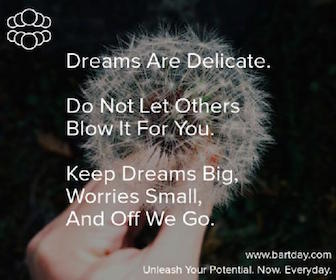Up to 75 percent of people could face deadly heatwaves by 2100 unless carbon emissions plummet, a new study warns.

PHOTOGRAPH BY RANA SAJID HUSSAIN
A new study has found that 30 percent of the world’s population is currently exposed to potentially deadly heat for 20 days per year or more—and like a growing forest fire, climate change is spreading this extreme heat.
Without major reductions in emissions of greenhouse gases such as CO2, up to three in four people will face the threat of dying from heat by 2100. However, even with reductions, one in two people at the end of the century will likely face at least 20 days when extreme heat can kill, according to the analysis, published on Monday in Nature Climate Change.
“Lethal heatwaves are very common. I don’t know why we as a society are not more concerned about the dangers,” says Camilo Mora of the University of Hawaii at Manoa, the study’s lead author. “The 2003 European heatwave killed approximately 70,000 people—that’s more than 20 times the number of people who died in the September 11 attacks.”
Dangerous heatwaves are far more common than anyone realized, killing people in more than 60 different parts of the world every year. Notable deadly heatwaves include the 2010 Moscow event that killed at least 10,000 people and the 1995 Chicago heatwave, where 700 people died of heat-related causes.
From our partners:
Heatwaves have also claimed victims more recently. In the last two weeks, dozens have died in India and Pakistan’s current heatwave, with temperatures spiking to a record 128 degrees Fahrenheit (53.5 degrees Celsius). And there have been heat-related deaths already in the U.S. this summer.
COUNTING VICTIMS
Mora and an international group of researchers and students examined more than 30,000 relevant publications to find data on 1,949 case studies of cities or regions where human deaths were associated with high temperatures. Lethal heatwaves have been documented in New York City, Washington, D.C., Los Angeles, Chicago, Toronto, London, Beijing, Tokyo, Sydney, and São Paulo.
Those facing the greatest risk live in the wet tropics, where only slight increases in average temperatures or humidity can result in deaths. However, heat can be deadly even at moderate temperatures of less than 86 degrees Fahrenheit (30 degrees Celsius) if it’s combined with very high humidity, Mora ays.
Heat kills ten times more people in the U.S. than tornados or other extreme weather events, says Richard Keller, a University of Wisconsin-Madison professor of medical history.
Extreme heat sneaks up on us because we expect it to be hot in the summer, says Keller, who has written a book on the 2003 European heat wave.
The human body’s internal temperature likes to be between 98.6 to 100.4 degrees Fahrenheit (37 to 38 degrees Celsius); any warmer, and it’s a fever. As temperatures rise, the body reacts by sweating to try and cool down.
If our internal temperature gets close to 104 degrees Fahrenheit (40 degrees Celsius), all-important cellular machinery start to break down. Body temperatures above 104 degrees are extremely dangerous and require immediate medical attention.
If the heat index—a metric that combines temperature and humidity—reaches 104 degrees Fahrenheit (40 degrees Celsius), our bodies begin to slowly heat up to the ambient temperature unless we take action to cool down.
The young and elderly, who disproportionately lack resources and are more socially isolated, are left the most vulnerable. The overwhelming majority of 15,000 heat-related deaths in France during the 2003 European heatwave were 75 or older, many of whom were living on their own, said Keller.
“Increasing inequality leads to increased deaths from heat extremes,” says Keller.
HEATING THE GLOBAL SOUTH
Heat didn’t used to be a huge problem in India, Pakistan, and other parts of the global south, but heat extremes are now more common and more intense with climate change, says Keller.
Thousands of people have died in India from the heatwaves in recent years. Another new study published in Science Advances found that the number of heatwaves in India killing more than 100 people increased 2.5 times between 1960 and 2009—an uptick likely due to climate change, says study co-author and University of California, Irvine professor Steven Davis.
Yet India’s mean temperature has only increased 0.9 degrees Fahrenheit (0.5 degrees Celsius) in the past 50 years, a mild increase in comparison to other parts of the world.
Surface temperature measurements show that the Earth has warmed 1.8 degrees Fahrenheit (1 degree Celsius) since preindustrial times, but this additional heat is not evenly distributed. The Arctic is 4.5 degrees Fahrenheit (2.5 degrees Celsius) hotter on average, and in November 2016, temperatures were an extraordinary 36 degrees Fahrenheit (20 degrees Celsius) higher than normal over most of the Arctic Ocean, an area larger than the continental U.S.
Small increases in mean temperatures can have a major impact in tropical countries, especially amongst the poor who are extremely vulnerable, Davis notes.
“In Chicago people can escape the heat, but that’s not the case for many poor people in India,” he says.
Temperature measurements reveal that summers in 92 percent of U.S. cities have become hotter since 1970. Cities in Texas and the Intermountain West are the most affected, according to data compiled by ClimateCentral. It shows summers in Milwaukee are now 2.4 degrees Fahrenheit (1.34 degrees Celsius) hotter on average, 3.3 degrees Fahrenheit (1.6 degrees Celsius) hotter in Dallas, and 3.8 degrees Fahrenheit (2.1 degrees Celsius) in Salt Lake City.
“This is what climate change means on the ground,” says Davis. Nor is it surprising there are 60 killer heatwaves a year, he added. Hotter temperatures are driving people to leave their homes and migrate.
“Our attitude towards the environment has been so reckless that we are running out of good choices for the future,” says Mora of the University of Hawaii.
“For heatwaves, our options are now between bad or terrible,” he adds. “Many people around the world are already paying the ultimate price of heatwaves.”
This feature originally appeared in National Geographic.

















